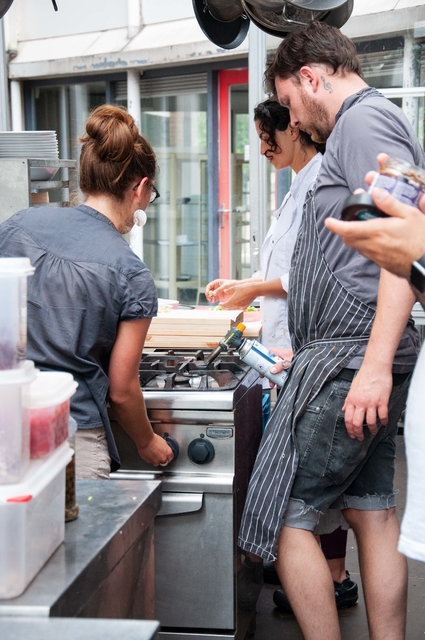In an attempt to deepen our understanding of the Tempeh fungus' potential, four trials with differing substrates were set up (see image, from left to right):
- Brown Lentil
- Mung Beans
- Black Sesame Seeds
- Hemp Seeds, dehulled
Sesame, Mung Bean and Lentil Tempeh after fermentation, packaged. - 
Elnaz Assar handling a Tempeh trial. -

The Seeds were cooked, cooled and mixed with the Tempeh fungus starter culture. After roughly 40 hours of growth in an 30°C Incubator, the samples were collected and inspected. Unpacking the sausage-formed Tempeh revealed that the Tempeh-fungus (Rhizopus Oligosporus) did not grow well on the Brown Lentil and dehulled Hemp. However, the Black Sesame and Mung Bean samples turned out very well.
Unpacking the Sesame Tempeh from its package after completed fermentation. - 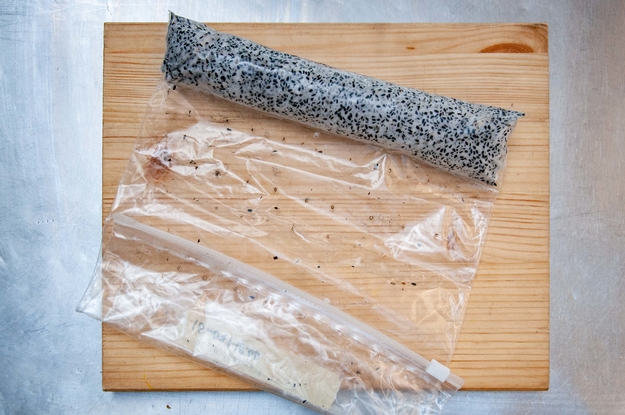
Sesame and Mung Bean Tempeh after fermentation, raw, unpackaged. - 
To prepare the Tempeh for eating, they first were steamed for about 10 Minutes.
A savory Marinade, consisting of Miso paste, fresh Chilies, Honey, Rice Vinegar and Sesame Oil was prepared to season the steamed Tempeh. The Tempeh Sausages were packed into a Ziplock-bag with the condiment and set aside to rest in the fridge for about 6 hours.
Miso Marinade preparation for Mung Bean and Sesame Tempeh rolls (seen on the right) - 
Marinated Tempeh Sausages (Mung Bean and Black Sesame) in plastic bag. - 
To give it the final touch, Magdalena and Elnaz decided to let the Tempeh have a roasted, crispy outside. While the Mung Bean Tempeh was left whole, the Black Sesame sample was sliced into bite-sized pieces beforehand.
Slicing a Tempeh sausage made out of Black Sesame, marinated with Chili and Miso. - 
A bite-sized piece of Tempeh made of Black Sesame; steamed and marinated. - 
Marinated Tempeh Sausages: Mung Bean (whole) and Black Sesame (sliced). - 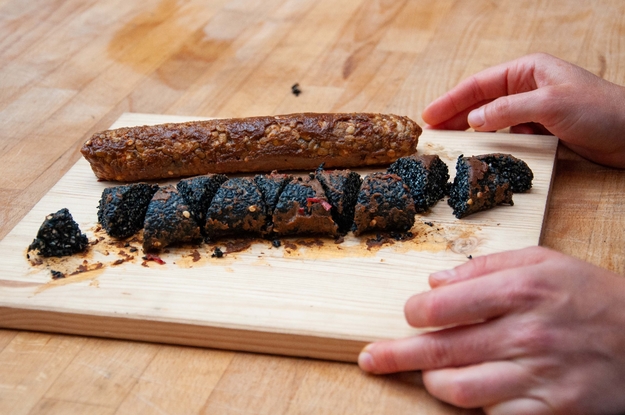
Heating the stove and tossing the Tempeh into an iron-cast pan.
Pan-frying Black Sesame Tempeh (triangle bits) and Mung Bean Tempeh (Sausage) - 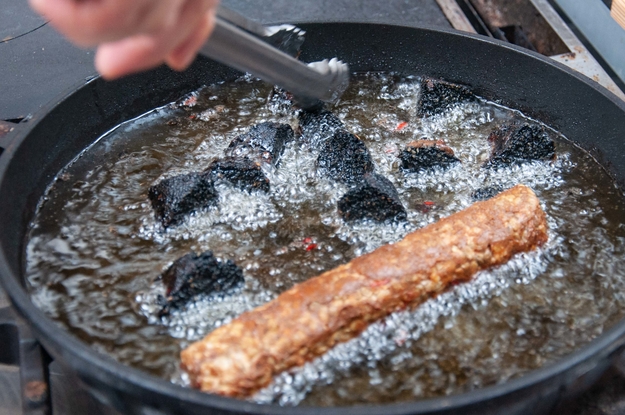
The final products:
Juicy "Mung Bean Tempeh deli slices" and crispy "Black Sesame Tempeh pyramids".
Black Sesame Tempeh (steamed then marinated and pan-fried). - 
Both varieties taste nutty, savory and umami, with a decent note of mushroom.
While the Sesame pyramids had a thorough and solid crunch, the Mung Bean Slices kept their juiciness, which gave a delightful contrast to its crispy caramelized outside crust.
The Chili spice, honey sweetness and miso depth complement the Tempeh's rich taste.
Tempeh Tasting Sessions GIF - Tasting Black Sesame and Mung Bean Tempeh
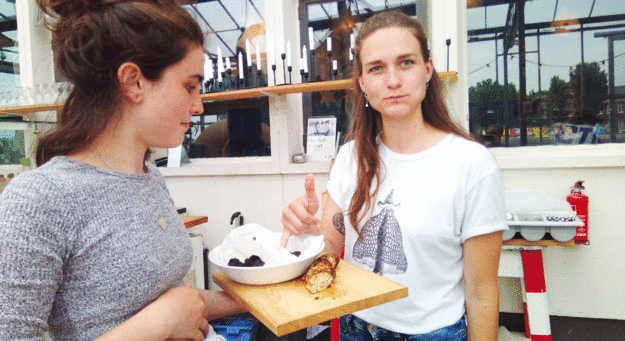
Both varieties received positive feedback, which fueled Elnaz' and Magdalena's motivation to further explore the culinary potential of Tempeh.




